Hunting is hard…but western hunting is just plain difficult! It strains your gear, your emotions and your body all at the same time. Hunting, regardless of the technologies we bring to the field will always remain a primal grudge match between predator and prey. The only thing we can improve upon as hunters is our fitness level. The frustration we feel during the fall hunting seasons reflects our own inability to handle the wild at her best and most fit. Some hunters forego preparations in the offseason and pay the price through not tagging an animal, being unable to keep up with the demands of the hunt or worst of all, may not be able to fully enjoy the hunt. While training to hunt may sound cliché, everyone’s journey is their own. Each person must want to take it upon themselves to be in peak form come fall. Each person’s “peak form” may be different, but your body and mental game must be at a minimum to complete your hunting adventure. This means taking hunting workouts and fitness seriously in the offseason.
PODCAST: John Stallone and Willi Schmidt – Planning and Preparing for Big Game Hunts Out of State
Table of Contents
- Before You Start: Consider Safety
- The Right Way to Start Is Through Nutrition
- A Body in Motion
- Hunting Workouts to Focus on For Western Hunting
- Hunting Workout Videos
- Core and Stability
- Barbell Lower Back and Legs
- Weighted Sled
- Trap Bar Deadlift
- Weighted Pull Ups
- Shoulder Press
- Rhomboid Row
- Train to Hunt Challenge:
- Conclusion…Keep the Hunt in Mind
Before You Start: Consider Safety
Diet and exercise should always be considered under the advice and guidance of a medical professional. Their knowledge and expertise can help you understand how to fully optimize diet and exercise for you and your body based on your age, current fitness level, and any injuries. Another reason to check with health care professionals is to keep a working track of your vitals, specifically your heart. Every year hunters succumb to a fatal heart attack in the wild and they may have never known they had a lurking heart problem. The actions of the wild through hiking and heavy lifting can lead to serious strain on the heart muscle and leave you in a dangerous situation especially if you are traveling to higher elevations on your hunt. Many months before hunting season it is always good to check your cardio health. Consider building a baseline of data every spring to track year after year.
The Right Way to Start Is Through Nutrition
A truck is worthless if the gasoline is of poor quality. Poor fuel robs the vehicle of efficiency through strength and endurance. The same goes for the body, the foods we eat, and supplements we take, as they make up a large portion of the overall performance and results we see through preparing our bodies. If you are not sure where to start, start by evaluating what you are eating and consult a professional if you need help shaping a plan.
A good rule of thumb is to stick to lean proteins, vegetables, fruits, complex carbohydrates throwing out simple carbs and starches and looking into additional supplements like Wilderness Athlete products. Adding supplement powders to your breakfast smoothies are a great way to further optimize the body. Workout recovery mixes like Protein Plus or Brute Strength also help you get the most from your time in the gym or from out hammering miles on your legs by providing a balanced proportion of protein and carbohydrates and proven nutritional anti-inflammatories. When you push your body to the next level through training, it will need help through supplements to replace the nutrients you are so quickly burning.

A Body in Motion
Exercise can seem overwhelming. Thousands of hunting workouts are possible and endless numbers of movements and methods, theories and techniques create a crisscrossing mire of confusion that the everyday hunter can find frustrating. Just getting up off the couch to get to the gym and break a sweat is a daunting task if there is no direction and no plan. Exercise requires a drive, desire, determination and most of all a plan!
Every hunt is different within itself just as each game species requires different hunting tactics. Each hunt will push different parts of the body and you can make the best use of the long offseason to prepare for the specifics of your hunt. In general, there are workouts that help in overall hunting fitness.
Hunting Workouts to Focus on For Western Hunting
When it comes to mountain and western hunting your entire being must be ready for the wear and tear of the daily grind. To be able to enjoy the rigors of mountain hunting, cardio endurance and leg and core strength should be on the forefront of your offseason workouts. Just remember that big bucks, bulls, and rams are killed because you were able to get to them and keep up with them, not because you muscle flexed them to death.
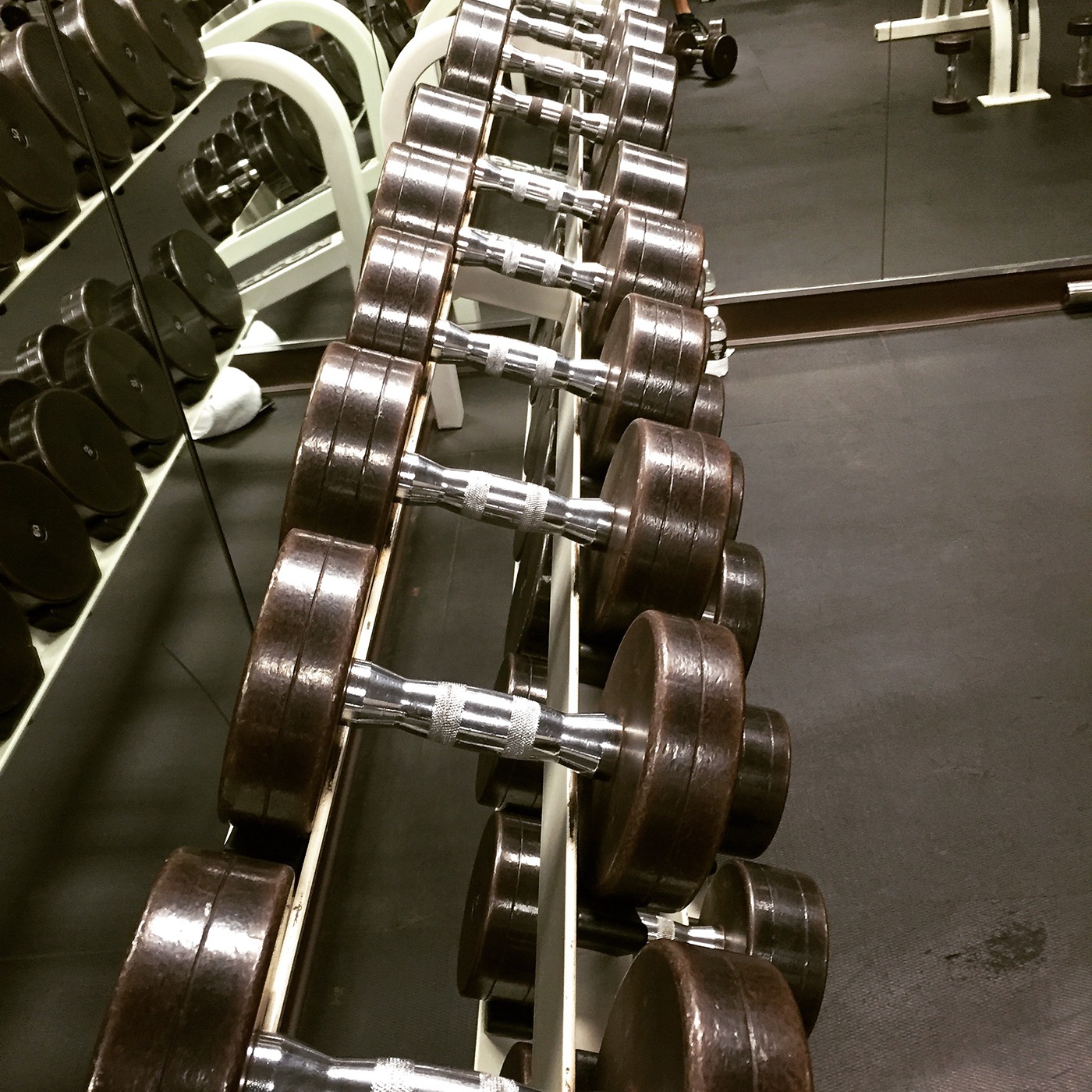
Cardio health can be achieved through any different forms of exercise. Running, biking, elliptical machines, stair climbers or even high-intensity workout videos provide quality cardio routines. Consistency is the key to building cardio stamina. Nobody says that it’s the most fun exercising in the world, but it is effective and trains the mind to deal with pain. The same pain you’ll deal with on a long hunt and hopefully packing out your trophy.
Pushups, lateral raises, and shoulder presses are simple daily exercises. Pushups work the triceps and parts of the shoulder muscles in addition to core muscles, back and pectoral muscles. Pushups are a stamina building exercise using your own body weight. Consistent and daily repetitions are the key to building long-term strength and endurance through this exercise in your off season training.
Lateral raises are another easy exercise not requiring heavy weight or much time. Lateral raises are an exercise in which you raise your arm in a Y, T and I form and hold for a few seconds at a time. This work out can be done with or without weights. If you choose to use weights, use small dumb bells no greater than 15lbs.
Leg day is often skipped since it requires much more effort both physically and mentally. If you can get over the mental hump of procrastination, working out your legs is not difficult at all.
The weight room also has plenty of options to strengthen legs muscles. Squats and leg presses are widely regarded at the go-to leg exercise, and for good reason. These motions work nearly every area of your legs and build core strength and stability. The form is the key for both methods and should always be done with a spotting partner. Other exercises include motions possible with dumb bells. Vertical and side-to-side lunges holding dumb bells are great for lower body resistance training. These motions work parts of your legs regular squats cannot. In the mountains every part of your legs are worked and strained as the constant stop and go, pushing and balancing yourself is a part of each step.
Packing out any animal is an ordeal. Often times the luxury of having pack animals is not available and the tough work must be done on your own back. Having a strong core and back is one of the most overlooked aspects of off-season preparation. Sure, everyone wants a great looking six pack to play the xylophone on, yet, a strong core is beyond the glamor. A strong core provides balance and strength as it is a part of your overall base. Beyond crunches, there are other great offseason workouts you can do to build a strong core. Squats help build core strength as a part of that routine, but planks and leg lifts directly target the core. These resistant style exercises are brutally painful when done consistently in the gym but help you get the results you need.
Back muscles provide the stability and stamina for carrying heavy loads. Exercises like lateral pull downs and dumbbell rows build these back muscles. Most gyms will have a lateral pull down the machine. With a wide grip bar, the idea is to use your scapula muscles in a downward motion. Pinch your shoulder blades together for a full motion and slowly let the bar back up. Don’t overload yourself and have incorrect form as this will not help you achieve the strength and results you need for the mountains. If a lateral pull down machine is not available, pull ups can serve a similar function working both back and arm muscles through a general pulling motion. Using one’s own body focus on going straight up and down to avoid swaying from side to side. There are many variations of pull ups from wide grip to revise grips and close grip work different parts of the lateral muscles. The key is proper form and consistency.
Hunting Workout Videos
These are a handful of hunting workout videos I have recorded over the year of some of the workouts I want to do to ensure each part of my body is ready for the hunting adventure ahead!
Core and Stability
Workout: Focus on the core with a combination of workouts seen in the video below, and by using a combination of balance and Bosu balls, medicine balls, and weighted sandbags.
The Hunting Application: Core and stability workouts as seen in the video below are absolutely critical when hunting in serious and uneven terrain. This is especially true when you are traversing the rough terrain with a heavy backpack.
Barbell Lower Back and Legs
Workout: Standard squats with a barbell strengthens your lower back, legs, and core for strength and stability.
The Hunting Application: This exercise has one of the most practical applications of any hunting workout as it applies to almost every aspect of the hunt from packing in gear to scaling the mountain to packing out the animal you’ve harvested. Do NOT overlook this highly effective training exercise while preparing for your next hunting trip.
Weighted Sled
Workout: The weighted sled workout is huge for overall strength and increases endurance by raising the heart sand forcing you to control your breathing.
The Hunting Application: There’s nothing worse than going on a hunt you’ve been planning for several months and realizing once you’re there that you’re not physically prepared. Struggle with the sled, and excel on the mountain. This approach will make your hunt that much more enjoyable!
Trap Bar Deadlift
Workout: Deadlifts are a great way to strengthen your legs, back, and core
The Hunting Application: Lower back injuries are common in the mountains. Lifting totes onto the pack mules, fetching water from the spring, packing your animal back to the horses. All of these tasks are a great opportunity to get hurt if you don’t strengthen your core with exercises like this…
Weighted Pull Ups
Workout: Pull ups speak for themselves… Pull your chest up to the bar and return to rest. This exercise builds several muscle groups to increase upper body strength in general.
The Hunting Application: Whether you’re hanging a new set for whitetails or scaling the final boulder to get to a better vantage point for glassing an opposing mountain range, pull ups are the perfect exercise to give you the upper body strength you need to get where you need to be!
Shoulder Press
Workout: Shoulder press works your anterior and medial deltoid (shoulder) muscles.
The Hunting Application: You name it… Hoisting gear onto your pack horse. Hanging tree stand sets. Drawing your bow. Anything at eye level or above uses these muscles.
Rhomboid Row
Workout: Rows are a great workout for strengthening your back and specifically your rhomboids, which lie between your shoulder blades and your posterior deltoids, the rear part of your shoulder.
The Hunting Application: This exercise is critical for shot execution and being able to stay at full draw for long periods of time. You’ll be surprised how much easier your bow is to shoot after you’ve been doing this exercise for a while…
Train to Hunt Challenge:
More often than not, most hunters begin their workout programs in July to get ready for the fall. It’s difficult if you have not been working out all year to get motivated or know where to start. Fall seems a long way off and it is often difficult to begin a workout regime in the late winter or spring. Having something to train for in the summer is a great motivator. Train To Hunt was created with this in mind.
There are now nearly a dozen Challenges throughout the country where you can test your fitness and archery shooting skills with others and have something to train for. Although the format has changed for 2017, it is a great program to get you ready for the hunting season, several months before you may have gotten started, The Challenges are a one-day event, and include a 3-D archery shoot in the morning and a Challenge Course in the afternoon. The 19 target, 3-D shoot includes some hunting situations, like shooting from a kneeling position, shooting and then drawing and shooting a follow-up shot within 10 seconds. The afternoon portion includes a longer course where you pack your bow and some weight in your pack and shoot targets along the way. Your 3-D score and your time and score on the Challenge Course are combined for an overall score. Not only does this give some motivation to begin a workout program, the Challenges are a lot of fun and the camaraderie is amazing! Train to Hunt not only puts on these challenges, they also have a workout generator (see below) on the website and can help you create a daily workout depending on your available time and fitness level!
Click Here for the Workout Generator!
Conclusion…Keep the Hunt in Mind
Western hunting is hard when we make it harder than it needs to be. Aside from the challenge of the chase, your body should not have to be the reason you struggle to fill a tag. Training for hunting or performing these hunting workouts in the offseason with the goal of being able to hunt in mind should be your driving power. Don’t let the daunting task of working out or climbing a mountain be the reason your western hunting adventure failed.








![Air gun 101: The differences between .177 & .22 – Which jobs they do best ? [Infographic]](https://airgunmaniac.b-cdn.net/wp-content/uploads/2024/11/1773-218x150.jpeg)






























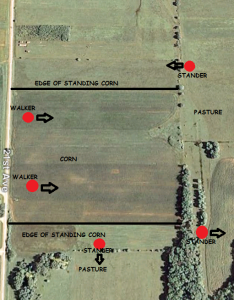 The position of the standers is paramount to the success of your drive. Standers should be set up to block all escape routes of the deer you are trying to move. I will use my hunting property to give you an example of this. The lay out of this land is simple. On the East side of the property is a large ridge with open mature hardwoods. The ridge only rises up about 10-15 feet in elevation. The West side of the land is a cow pasture that covers about 10 acres or so and runs adjacent to the road. The North end is a corn field, and the south end is a swampy area that the deer use as bedding and butts up to public land. The swampy area extends through the middle of the property essentially cutting it in half. This finger of swamp running between the hardwoods to the east and the pasture to the west makes for a perfect travel and escape route for the deer. Our walkers start by coming in on the public land to the south and push through the swamp towards the corn in the north. The deer normally follow the swamp on their way to the corn, essentially making it a pinch point. They do not like escaping through open territory, preferring to stay in cover as long as possible. We put one stander on the ridge to the east to catch any deer that shoot out the side, one in the pasture for the same reason, and then 1 or 2 along the corn to block off any way of escape. If there are any deer bedded down in the swamp, they are sure to bust out in the direction of one of the standers. The walkers in this scenario do not have much opportunity for shots due to the thickness of the cover, which is also why the deer love to hide here. If your standers have all escape routes blocked, success is assured. If there are any gaps or escape routes not covered, it is guaranteed the deer will find the weakness and exploit it.
The position of the standers is paramount to the success of your drive. Standers should be set up to block all escape routes of the deer you are trying to move. I will use my hunting property to give you an example of this. The lay out of this land is simple. On the East side of the property is a large ridge with open mature hardwoods. The ridge only rises up about 10-15 feet in elevation. The West side of the land is a cow pasture that covers about 10 acres or so and runs adjacent to the road. The North end is a corn field, and the south end is a swampy area that the deer use as bedding and butts up to public land. The swampy area extends through the middle of the property essentially cutting it in half. This finger of swamp running between the hardwoods to the east and the pasture to the west makes for a perfect travel and escape route for the deer. Our walkers start by coming in on the public land to the south and push through the swamp towards the corn in the north. The deer normally follow the swamp on their way to the corn, essentially making it a pinch point. They do not like escaping through open territory, preferring to stay in cover as long as possible. We put one stander on the ridge to the east to catch any deer that shoot out the side, one in the pasture for the same reason, and then 1 or 2 along the corn to block off any way of escape. If there are any deer bedded down in the swamp, they are sure to bust out in the direction of one of the standers. The walkers in this scenario do not have much opportunity for shots due to the thickness of the cover, which is also why the deer love to hide here. If your standers have all escape routes blocked, success is assured. If there are any gaps or escape routes not covered, it is guaranteed the deer will find the weakness and exploit it. The wind is always a primary concern when it comes to hunting whitetails. The whitetail’s best defense is its sense of smell. While playing the wind during a deer drive, there are different factors to consider than just sitting in your stand. You should line up your walkers to walk with the wind, and your standers should be upwind of the drive. This allows the deer to smell the walkers. Letting the deer smell you may be something that goes against all you have been taught about hunting deer. The main purpose of letting the deer smell the walkers is to make them move before being jumped. If the deer sense your presence before you jump it they will move off towards the standers much sooner. If the deer do not know the walkers are coming towards them, you run the risk of jumping them at close range. If you startle the deer they are more likely to run full speed away. A deer at full speed is far harder to hit for the standers than one that is try to creep away. When they are moving away slower they are more likely to stop to look back at the danger, giving the shooter a chance to get a clean shot. A startled deer will not stop running until it knows it is safe. There are so many variables in taking a shot on a whitetail that is running for its life. You have to be able to hit something the size of a paper plate that is running at 30+ mph, and is bounding up and down, and zigzagging left and right. It almost seems impossible when you think about it. I have taken several deer while running, but have missed more. It is difficult to make an accurate shot at that target, and there is no way to practice for such a scenario. I have yet to see a rifle range that has moving targets that move as randomly as a running deer. There are some ranges that have a running deer moving target, but it is mainly a target that moves at a slower more predictable speed, and they move in straight lines. To make this shot requires either great skill or great luck, most of the time luck. With this in mind, I agree with most that say it is unethical for the majority of people to attempt this shot. The practice I have with this shot is the fact that I have made many of them. With deer drives firmly infused into my blood, I know what to expect when attempting a running shot. Opening day 6 years ago, I was sitting in my traditional rifle stand overlooking a corn field. Late in the morning a 7 point buck came out of the woods at full run across the cow pasture I was hunting over, headed for the corn. I knew if it hit the corn field it was going to be impossible to take it. I settled my rifle on a tree branch in front of me and started to track the deer through the iron sights of my Marlin 336 .35 Remington. This model gun is usually only good for shots under 200 yards; and that is in ideal shot conditions, but I knew my gun well.
The wind is always a primary concern when it comes to hunting whitetails. The whitetail’s best defense is its sense of smell. While playing the wind during a deer drive, there are different factors to consider than just sitting in your stand. You should line up your walkers to walk with the wind, and your standers should be upwind of the drive. This allows the deer to smell the walkers. Letting the deer smell you may be something that goes against all you have been taught about hunting deer. The main purpose of letting the deer smell the walkers is to make them move before being jumped. If the deer sense your presence before you jump it they will move off towards the standers much sooner. If the deer do not know the walkers are coming towards them, you run the risk of jumping them at close range. If you startle the deer they are more likely to run full speed away. A deer at full speed is far harder to hit for the standers than one that is try to creep away. When they are moving away slower they are more likely to stop to look back at the danger, giving the shooter a chance to get a clean shot. A startled deer will not stop running until it knows it is safe. There are so many variables in taking a shot on a whitetail that is running for its life. You have to be able to hit something the size of a paper plate that is running at 30+ mph, and is bounding up and down, and zigzagging left and right. It almost seems impossible when you think about it. I have taken several deer while running, but have missed more. It is difficult to make an accurate shot at that target, and there is no way to practice for such a scenario. I have yet to see a rifle range that has moving targets that move as randomly as a running deer. There are some ranges that have a running deer moving target, but it is mainly a target that moves at a slower more predictable speed, and they move in straight lines. To make this shot requires either great skill or great luck, most of the time luck. With this in mind, I agree with most that say it is unethical for the majority of people to attempt this shot. The practice I have with this shot is the fact that I have made many of them. With deer drives firmly infused into my blood, I know what to expect when attempting a running shot. Opening day 6 years ago, I was sitting in my traditional rifle stand overlooking a corn field. Late in the morning a 7 point buck came out of the woods at full run across the cow pasture I was hunting over, headed for the corn. I knew if it hit the corn field it was going to be impossible to take it. I settled my rifle on a tree branch in front of me and started to track the deer through the iron sights of my Marlin 336 .35 Remington. This model gun is usually only good for shots under 200 yards; and that is in ideal shot conditions, but I knew my gun well. 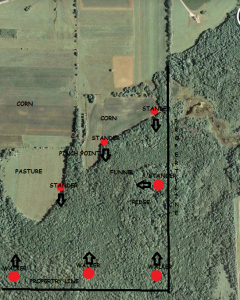 I knew the closest that deer was going to get was about 175 yards away and with it at a full run, most people would not even think of attempting it. As it got closer and closer to the corn I knew it was now or never. I concentrated on my aim, let out a deep breath, and touched off a round. The deer folded up where it was at. I would be foolish to think that a shot like that was all skill. I know for a fact that there was a lot of luck involved. If the deer would have varied any on its path to the corn, I would have missed badly, or worse, wounded the deer so it would suffer. I am confident in taking a running shot, but it is not for everyone. 99% of all shot opportunities on deer during a drive will be moving deer, anything you can do to make the deer take a slower retreat; will greatly improve your odds of success.
I knew the closest that deer was going to get was about 175 yards away and with it at a full run, most people would not even think of attempting it. As it got closer and closer to the corn I knew it was now or never. I concentrated on my aim, let out a deep breath, and touched off a round. The deer folded up where it was at. I would be foolish to think that a shot like that was all skill. I know for a fact that there was a lot of luck involved. If the deer would have varied any on its path to the corn, I would have missed badly, or worse, wounded the deer so it would suffer. I am confident in taking a running shot, but it is not for everyone. 99% of all shot opportunities on deer during a drive will be moving deer, anything you can do to make the deer take a slower retreat; will greatly improve your odds of success. A few years ago, I was a walker on a short drive at our hunting property. I was equipped with a two-way radio to communicate with the standers, and I was the only walker. I made it about a quarter of the way through my drive when I jumped 2 does and a mature 9 point buck out of a thicket. Because I paid attention to my surroundings and never relaxed during my walk I was able to see the deer and tell the standers what was coming at them. My dad was ready with his gun up and into position already by the time that buck crested the ridge line in front of him. It was the biggest buck of his life, and undoubtedly noticing what was going on in front of me greatly helped in the success of that drive.
A few years ago, I was a walker on a short drive at our hunting property. I was equipped with a two-way radio to communicate with the standers, and I was the only walker. I made it about a quarter of the way through my drive when I jumped 2 does and a mature 9 point buck out of a thicket. Because I paid attention to my surroundings and never relaxed during my walk I was able to see the deer and tell the standers what was coming at them. My dad was ready with his gun up and into position already by the time that buck crested the ridge line in front of him. It was the biggest buck of his life, and undoubtedly noticing what was going on in front of me greatly helped in the success of that drive.
















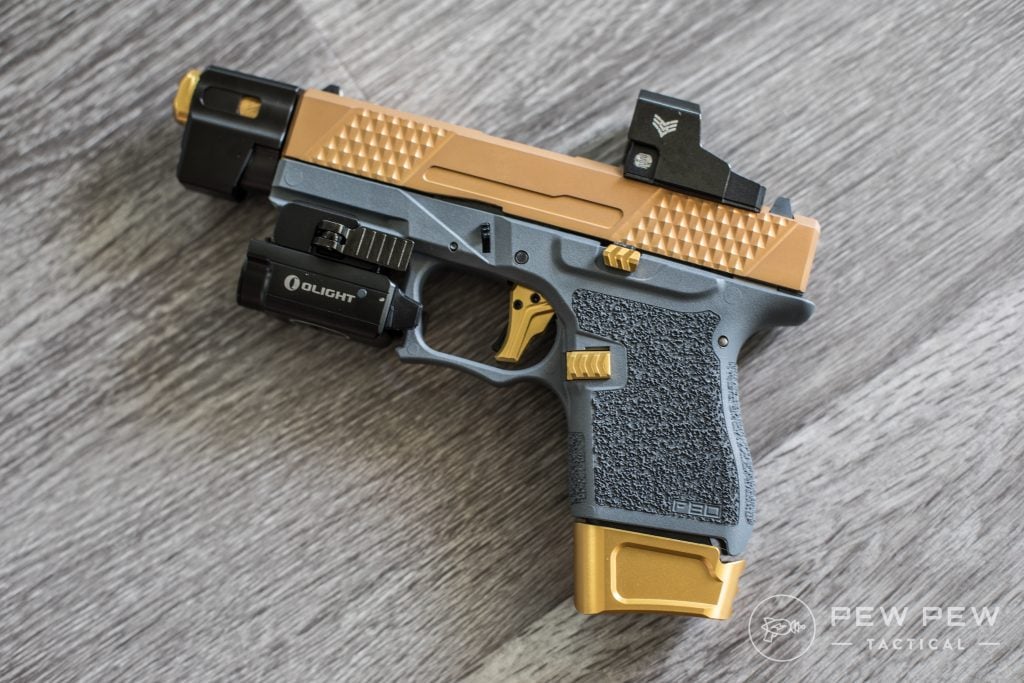
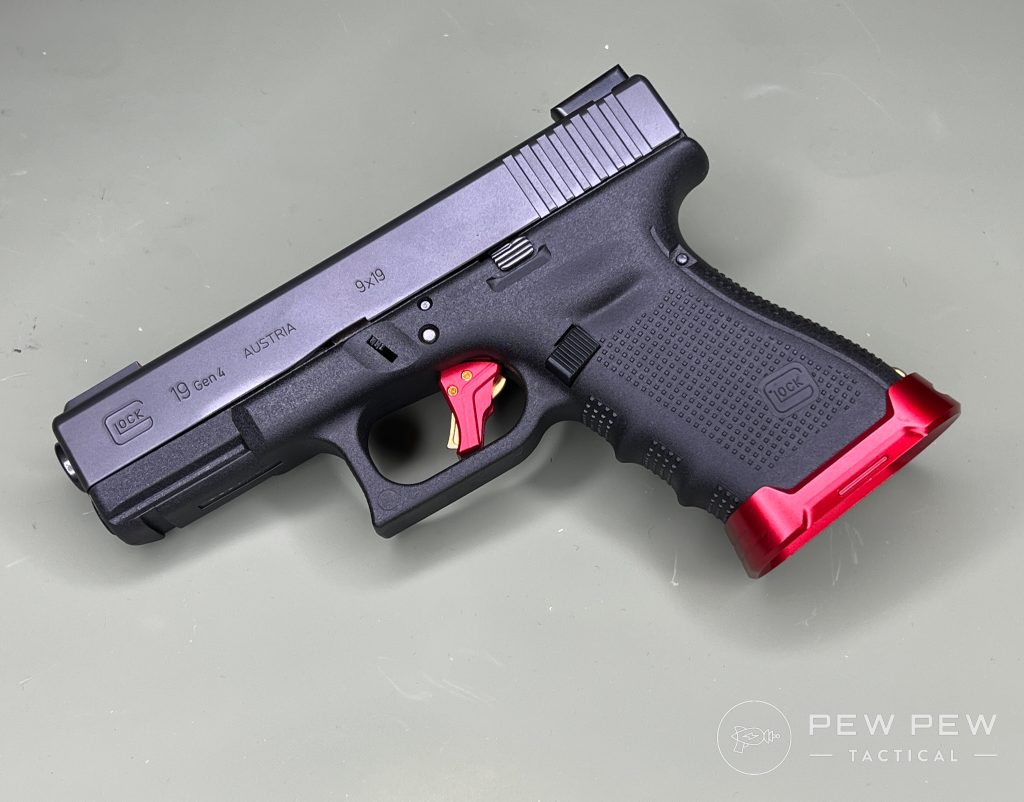
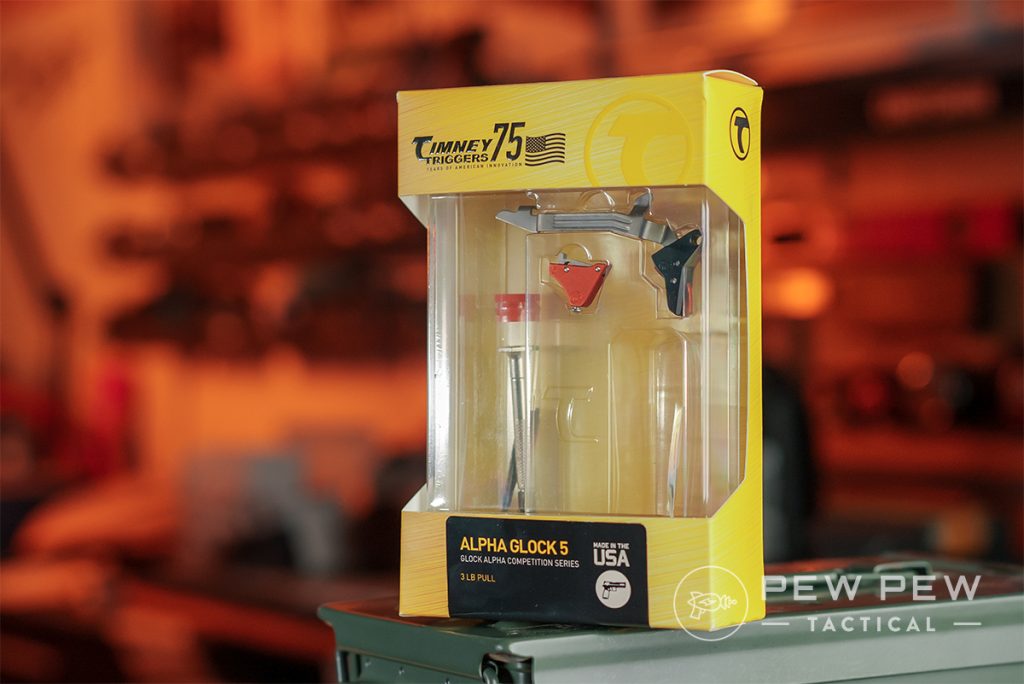


![Best Glock Triggers [Hands-On Tested]](https://www.pewpewtactical.com/wp-content/uploads/2020/08/3.-Full-Tyrant-CNC-Glock-Upgrades-1024x683.jpg)





